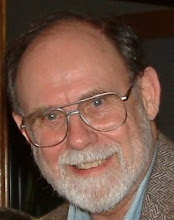-----------------
A practitioner's response:I'm the retired (ha!) director of the Willamette University School of Education where I gave numerous assignment for student/student teachers to 'reflect' on either what they saw in a observation of another teacher or on their own practice as a student teacher. Our program was heavy in requiring reflective tasks. From that experience comes this caution - the reflective practices of your students may not be done under the same definition you are proposing. If I use hindsight to define reflection as used by the vast majority of our students, it was to describe what they saw or remembered, with a cautious evaluative conclusion.
Again in hindsight, I don't think the faculty had a clear definition of reflection, certainly not a common one, and I don't believe, based on the outcomes, that we make the task of reflection clear to the students.
As I 'reflected' on my career in teacher education (reviewing what I had done, what was effective/not effective, identifying a central theme to my practices, and what I would change were I to start over) - my post retirement definition that I wish I had used with students - I concluded that my efforts to improve their teaching skills through praise, criticism, and offering of various solutions to their teaching problems was largely ineffective. It wasn't until I took a more objective role in observation/evaluation that I found success, both in the depth of teacher reflection and in effective change in teaching practices.
I found that when I shifted from feedback in the form of anecdotal notes to providing objective data on what was happening in the classroom, the students/student teachers shifted from a defensive/deflective or accommodative response to one of independent reflection (definition above), problem solving, and change.
In my now failed retirement, and initially as a mental exercise, I developed the Data-Based Observation Method and then wrote a software program to support it. The software is not necessary, but make it much easier.
In the Data-Base Observation Method the focus of an observation is collaboratively determined between observer and observee - "What do you want to know about your classroom?". Guiding questions can be used to focus the process on categories such as content delivery, class management, student relations, etc. Once the focus has been determined, the observer will gather objective frequency and duration data on classroom behaviors of teacher and/or students.
Here's where the reflection come in. The data is provided to the teacher with these questions "Is this what you thought was happening in your classroom? Is a change needed? If so, what will you change?" When this external, objective picture of what had happened in their classroom (part one of my definition - reviewing what I had done) is presented, the teachers make the determination of whether the teaching/learning was effective/not effective (part two of the definition).
Professional level discussion ensues, based on the objective data, to determine if and/or what changes should be made (part four of the definition - part three, identifying a central theme, comes after a number of the data-based discussions).
There now has been five years of implementation of this method by me, school administrators, and peer coaches and I have found that it builds the skill of reflection in teachers, a skill I am coming to see as a critical element in becoming a long-term successful teacher. I believe that 'reflection' is shallow and surface when the person does not have the factual basis for understanding what occurred and when the reflective task is to be either self or externally evaluative in nature. The question is not "How did I do?" (Answer: good, poor, passed, a 6 out of 10, I liked it, etc), but "What happened and was it effective?"




